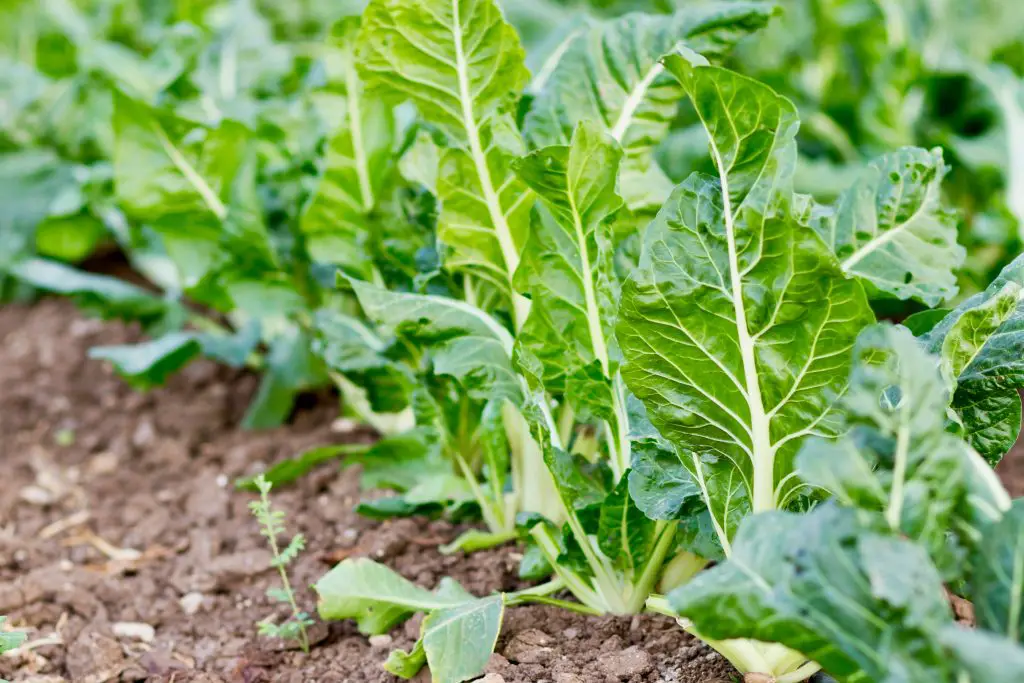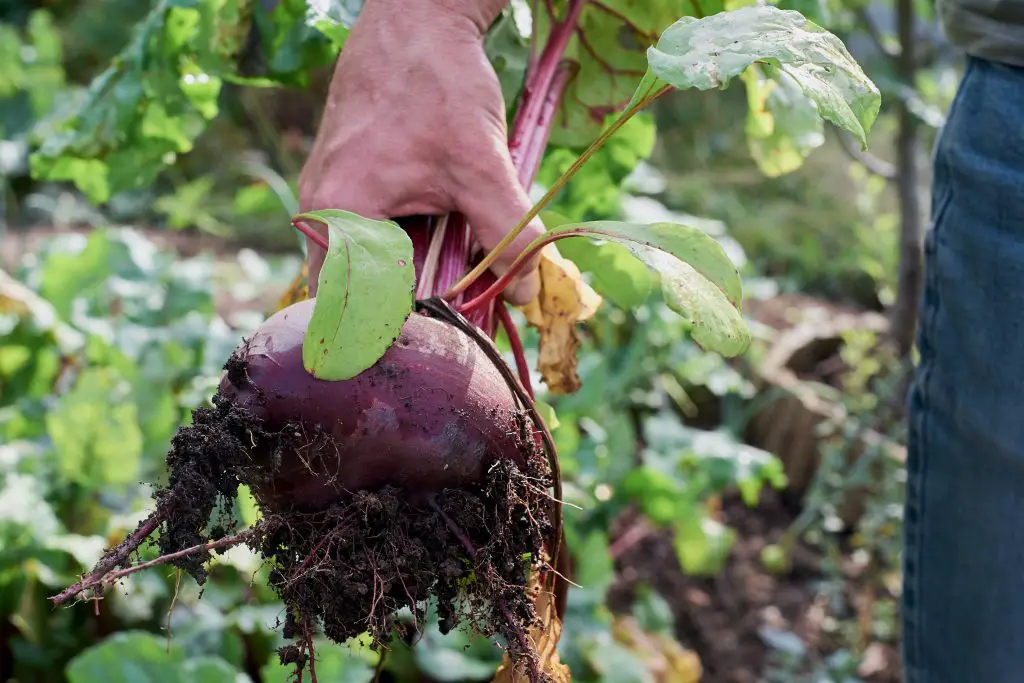Is A Beet A Fruit Or Vegetable? The beet family consists of a range of edible plants which include silverbeet, beetroot, sugarbeets that are extremely versatile in a range of dishes. The family of plants can produce leafy greens, hardy roots along with being an alternative source of sugar. So are beets a fruit or a vegetable?
Beets are classified as vegetables. This classification is based on the parts of the plant that are typically eaten. An edible plant in which the stems, leaves, or roots are consumed is classified as a vegetable. A fruit is the part of the plant that contains seeds of the plant which include tomatoes, cucumbers, zucchini, and watermelon.
The most common vegetables from this family grown at home are silverbeet (aka chard or swiss chard) and beetroot. Silverbeet is primarily grown for its foliage stems whereas beetroots are grown for their swollen roots, however, beetroot leaves are commonly harvested when extremely young and included in loose leaf salad mixes. This is primarily done because the red-veined leaves add color and textural variation to salad mixtures.
Are Beets Easily To Grow
Beets are extremely easy plants to grow. This is because the plants germinate easily, tolerant of a range of weather, soil, and light conditions. The plants are hardy and will tolerate frosty conditions which means that the plants can be grown year-round in areas where the winters are not too cold. The plants are also highly tolerant of a wide variety of soils from sandy loams to relatively heavy clay-based soils.
In terms of light beets will do well in both part shade and full sun, which marks them suitable to be grown in areas that many other vegetables can’t. Also due to the tolerance of lower light conditions, they are also suitable as companion plants under taller climbing plants such as pumpkins, beans, and cucumbers.
Additionally, silverbeet is a prolific producer of green leaves over a long period of time compared to other comparable plants such as lettuce and spinach which tend to go the seed relatively quickly.
Beetroot is also a highly flexible vegetable as it can be harvested for its roots and leaves. The root can sit for an extended period of time in the garden and can store well which ensures that the vegetable is available for most of the year.

How To Grow Beets
As mentioned above beets are relatively easy plants to grow. They can generally be sown at any stage throughout the growing season, however, it is important to note that while these plants are tolerant of cold conditions and frost they still require a reasonable temperature to ensure that the seeds germinate.
Generally, I recommend that the seeds are sown from early spring until late summer as this provides an opportunity for the plant to become established prior to the arrival of cold weather. If the plant is sown in Autumn, generally, it won’t allow harvesting through the winter period as the plant has not reached a sufficient size and will not grow significantly through winter.
For those that live in cooler climates, beets can withstand temperatures of 25°F (-4°C) however at temperatures below this level the plant require protection in the form of a row cover that is sturdy. The one we recommend is the Growsun Garden Tunnel Plant Cover because it is relatively tall and has hoops that can be anchored deeply into the ground which allows it to resist wind. The product is shown in the image below.

How To Sow Beet Seeds
When sowing the seed it is recommended that the seeds are started off in trays rather than being sown directly into the garden as it provides several advantages. The first is that sowing the seeds into a tray makes it easier to control the climatic conditions. If you are wanting to get an earlier start in the season keeping the seeds indoors where it is warmer really speeds things up.
However, if you live in a really cold climate it may be worth investing in a heated propagation tray, as they are not that expensive and they provide the ideal growing conditions for young seedlings. There are many of these types of products on the market, however, the one we prefer is iPower Heating Seed Starter Germination Kit. The main reason for this is it has a vented dome which helps to maintain a humid environment and reduce the degree of temperature fluctuations. Click on the link to see the current price on Amazon.

When planting the seeds it is best to use a specific seed raising mixture, as it is light, fluffy, and has good moisture retention which is ideal to germinate seeds. The seeds should be planted at a depth of around 0.5 inches (1 cm). For silverbeet, the number of seeds recommended is 2 per cell as this should ensure that at least one plant germinates in the cell.
In the case of beetroot, we recommend sowing it in clumps. This technique is sometimes referred to as multisowing, it works well if there are 4 to 5 plants in a clump. Multi sowing beetroot has several advantages over sowing the plant individually, the first is that it saves space in the seed tray as 150 plants can fit into a standard 30 cell seed tray.
The second key advantage is that it is significantly faster to transplant the seedlings into the garden. Additionally, the clumps can be planted 10 inches apart which makes maintenance easier as a dutch hoe can be used. This is much quicker than hand weeding.
The yields that can be achieved from the plant are similar provided that the clump is limited to 5 seedlings, any more than that in a clump will result in smaller roots. To achieve this number of plants in a clump it 5 to 6 seeds should be sown. If all the seedlings germinate they can be thinned prior to transplanting.
Once planted most beet seedlings will emerge after 7 to 14 days. They will typically take a further 4 weeks or sow to reach a larger enough size to enable the seedlings to be planted out in the garden.

Transplanting And Caring For Seedlings In The Garden
When planting beet seedlings into the garden they should ideally be spaced approximately 1 foot (30 cm) apart in a sunny location, however, beets will tolerate shadier locations. In terms of soil conditions, beets prefer rich, moist but well drained soil that has plenty of organic matter.
Young beet seedlings are highly susceptible to attack from slugs and snails in the first weeks after transplantation in particular. As such protection needs to be applied on the same day that they are planted in the garden. To protect them it is advisable to sprinkle snail pallets around the plant alternatively a physical barrier can be applied in the form of a cloche.
The cloches can be made easily by cutting the bottom off an old soft drink bottle or plastic milk carton. This will not only stop slugs and snails it will also aid the growth by increasing the temperature around the plant.
Once the plants are in the ground it is advisable to apply a thick layer of organic mulch to help retain moisture. To ensure that the plants grow strongly it is important to water them regularly.

Harvesting Beets
Harvesting Silverbeet leaves is quick and easy. They can be harvested at any stage once the plant is around 6 to 8 inches tall. The plant will normally take a little while to get going but once it does it will produce prolifically for the best part of a year in most cases before going to seed.
To ensure that ongoing harvests can be taken from the plant, only the outer leaves of the plant should be taken. This will allow the inner leaves to continue to grow so that it is ready for the next harvest.
Beetroot can be harvested for both its leaves and its roots. When harvesting the leaves it is best to harvest them when they are young as they can become tough and fibrous when they are older. However, if you are planning to harvest the roots later it is important to only remove a few leaves from the plant at a time to ensure that the plant can continue photosynthesis which is required for roots to develop properly.
The roots of the beetroot can be harvested at any stage once the plant reaches the size of a golf ball. If you are removing them from a clump it is best to select the largest beetroots in the clumps. The remaining roots can be left in the clump to increase in size until you are ready to pick them. To avoid disturbing the entire clump of beetroots it is best to twist the plant out rather than pull it.
Beetroots can be left in the ground all winter provided that it does not get too wet and soggy. If they need to be removed they will store for months in damp sand.
